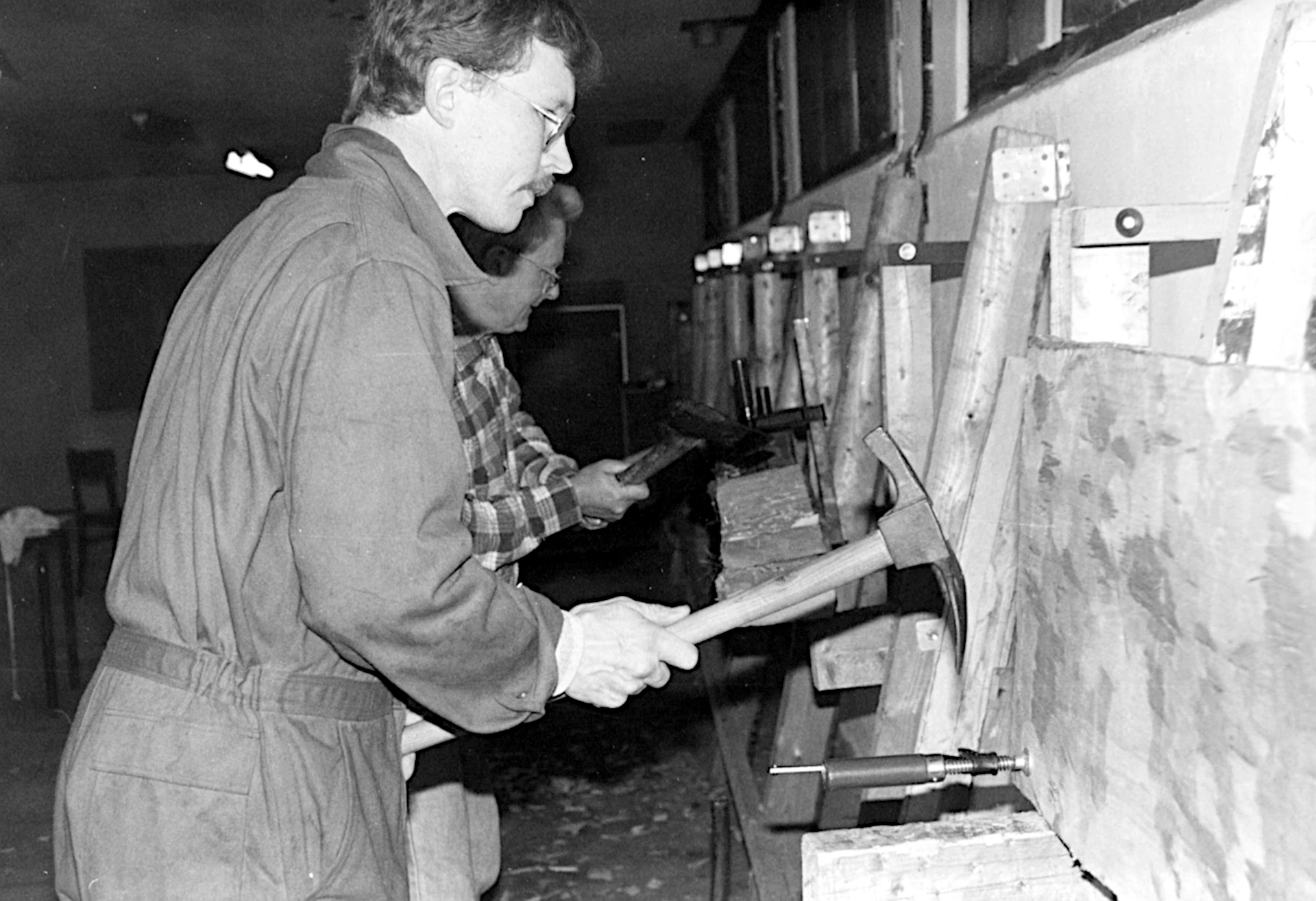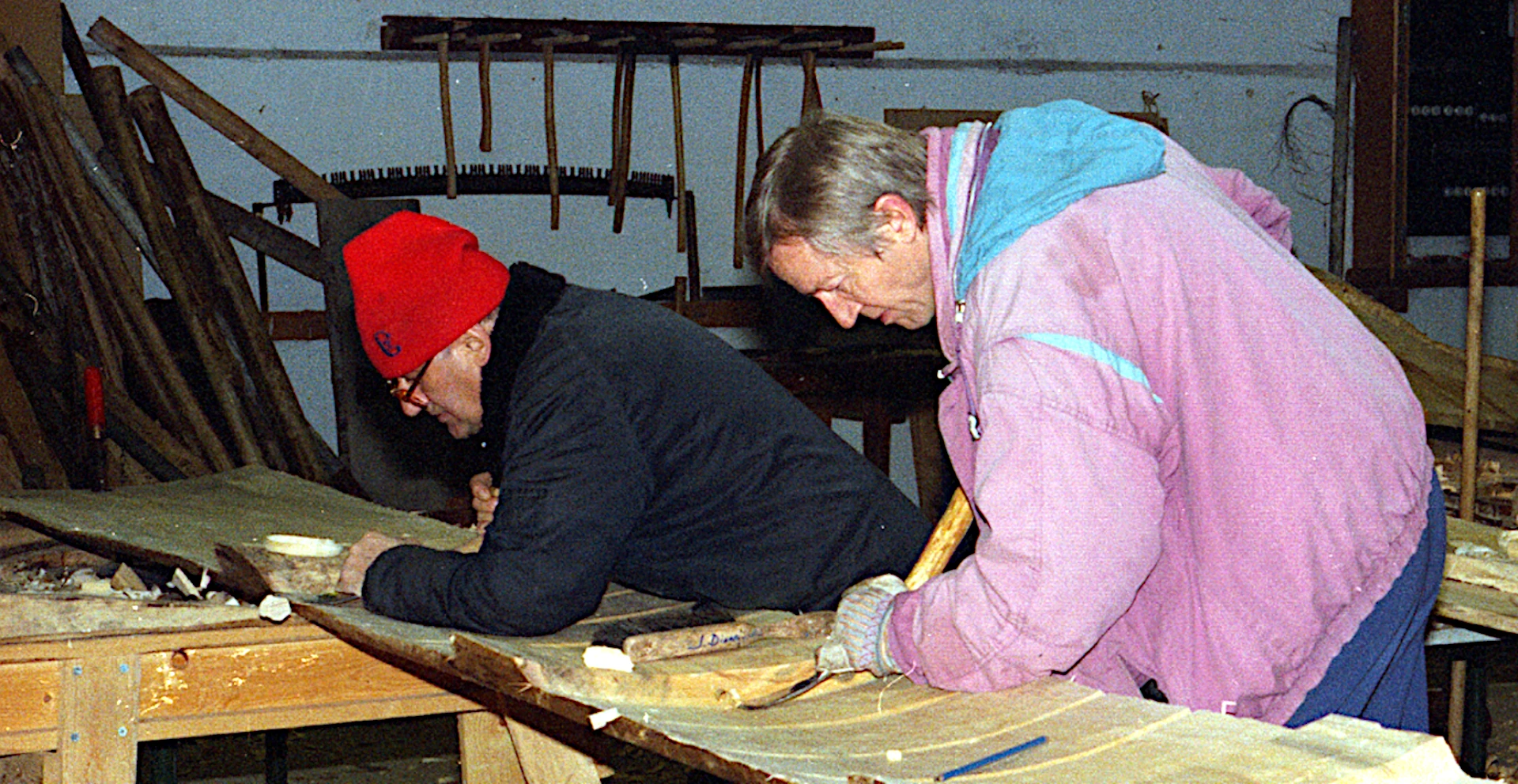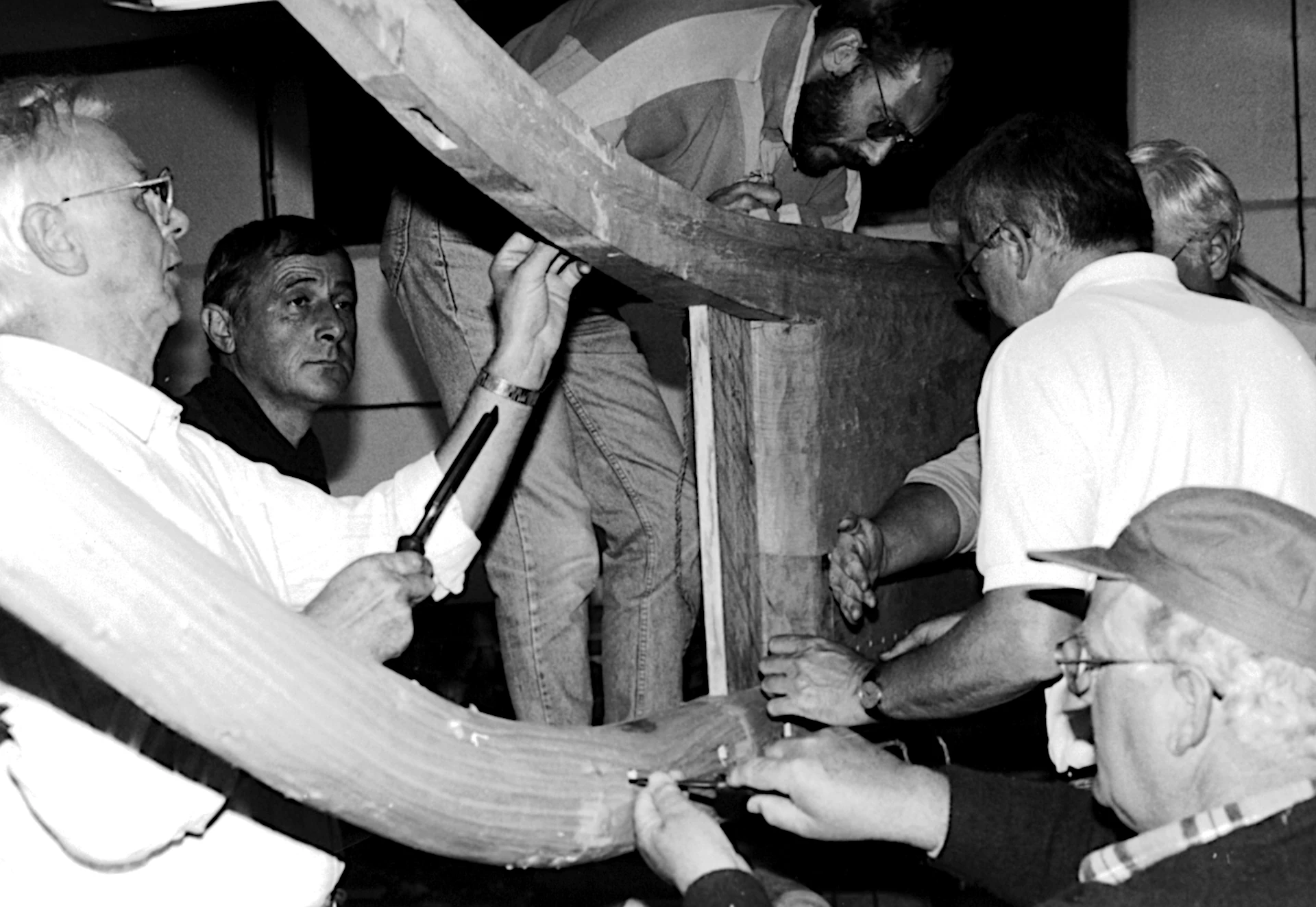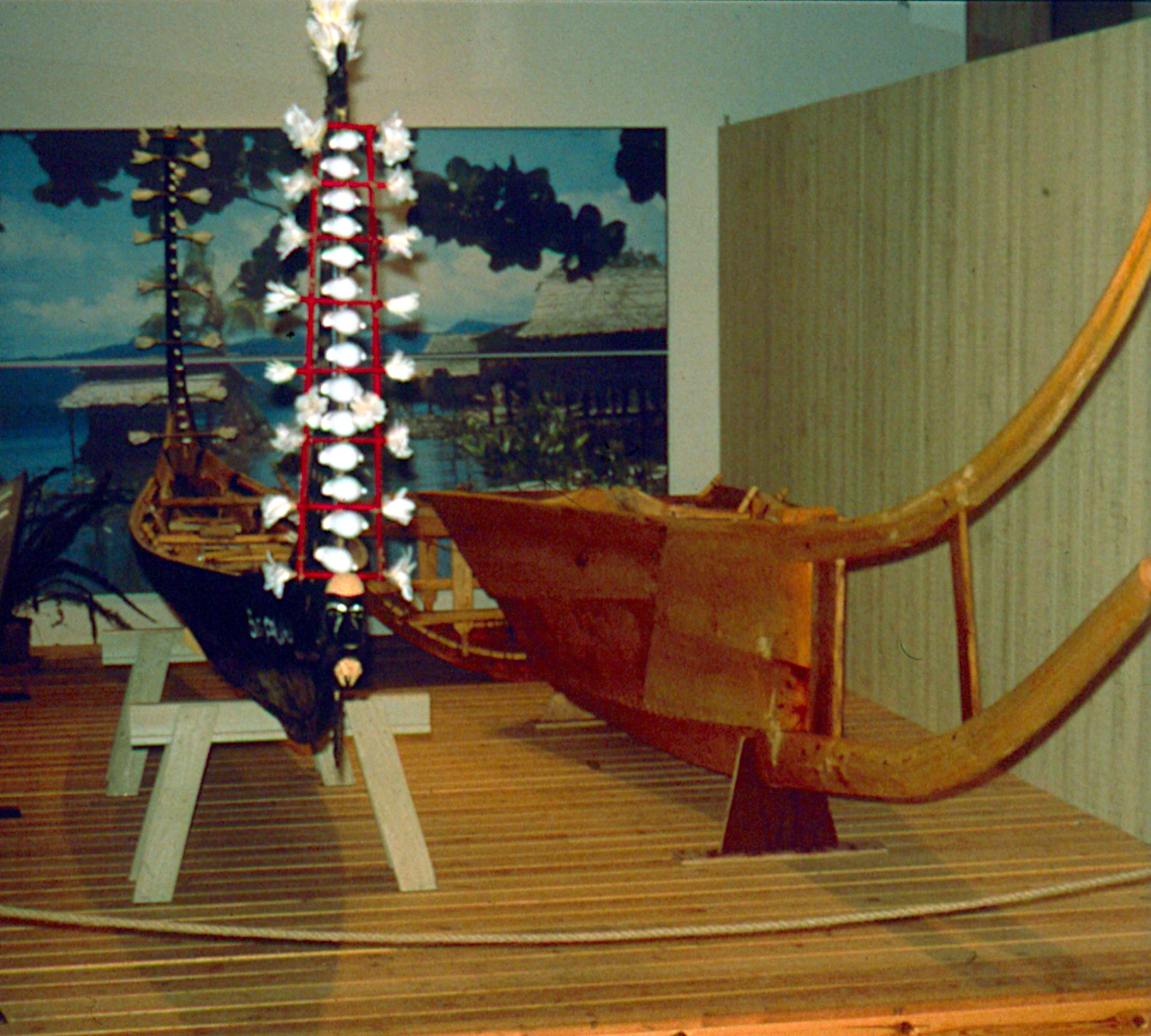Woodworking
None of the members had any formal background in woodworking. Two members had previously participated in building Viking ships and others had a good knowledge of woodworking as a hobby.
To involve more people in the art, to learn the methods of ancient tools and to get a feel for what linden wood was like, a woodworking training phase began. Local linden trees were used as the starting material.
We started by carving replicas of shields from the find, some paddles were made and two rowing benches were carved.
As tools from the blacksmith group appeared, they were tested. The best cutting angle for the cutting edge was found, and different shank and handle designs were tried and chosen.
During the training phase, the strengths and weaknesses of the individual members emerged and a division of labour emerged. Some naturally took care of rough-cutting workpieces, while others finished the surfaces. Tool sharpening also became a speciality. Clean-up and cleaning were considered essential for safety and quality.
The method of working the wood was to remove the large quantities with azdes and when close to the final shape, cut grooves with a gouge down to the desired shape. These grooves were spaced 10 cm apart. Finally, the wood between the grooves was removed using the flat irons and the surface was smoothed.
Sandpaper was not used.
The cut was almost always made across the grain of the wood.
In the beginning we worked on Saturdays, but soon we started ‘chopping’ every Tuesday and Thursday evening. There were between 6 and 12 boat builders.
After a few months of practising with items such as shields and thwarts, we started building two 1:1 scale test pieces of the boat. The aim was to study the details of the boat and develop methods to produce them. Equally important was to learn about the assembly methods.
However, the most important purpose was to convince ourselves (and those around us) that we could build the boat.
The first test piece was a centre section of the boat with a length of 1.4 m. It contained two thwarts and gave us experience in making cleats, the pierced thickenings in the planks to which the frames were lashed. We also learnt how to make and install the frame systems and sew the planks together.
The second test piece was the first 5 metres of the bow from the outer tip of the horn to shortly after the front frame system. This test piece included the making of the horns, the joint between the lower horn and the bottom plank, the making and fitting of the bow, and once again the fitting and sewing of the planks or boards, as the planks are often called in wooden shipbuilding.
One particular aspect was studied, namely the landing of the planks on the bow. Johannessen had indicated in his drawing that the ends of the planks should be mounted on the inside of the bow. We were somewhat dubious about this interpretation, which was so different from all other boatbuilding principles. Therefore, we had the starboard board land on the inside and the port board on the outside of the bow, so we had a basis for discussion.
An agreement had been made with Vikingeskibshallen in Roskilde that the two test pieces would be displayed in an exhibition there together with a replica of a sewn canoe from Tomoko in the Solomon Islands. When setting up the test pieces, we had a discussion with the archaeologists from the maritime centre and realised that the boards should land on the bow from the outside.
One comment from one of the archaeologists that had a big impact on our boat was the desire for a more refined finish.
The logged labour time for making the test pieces was 1,800 man-hours.







